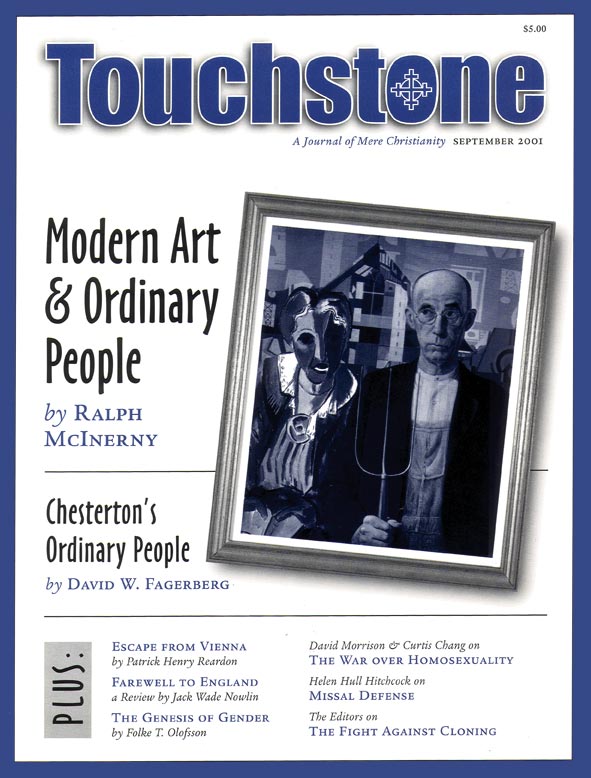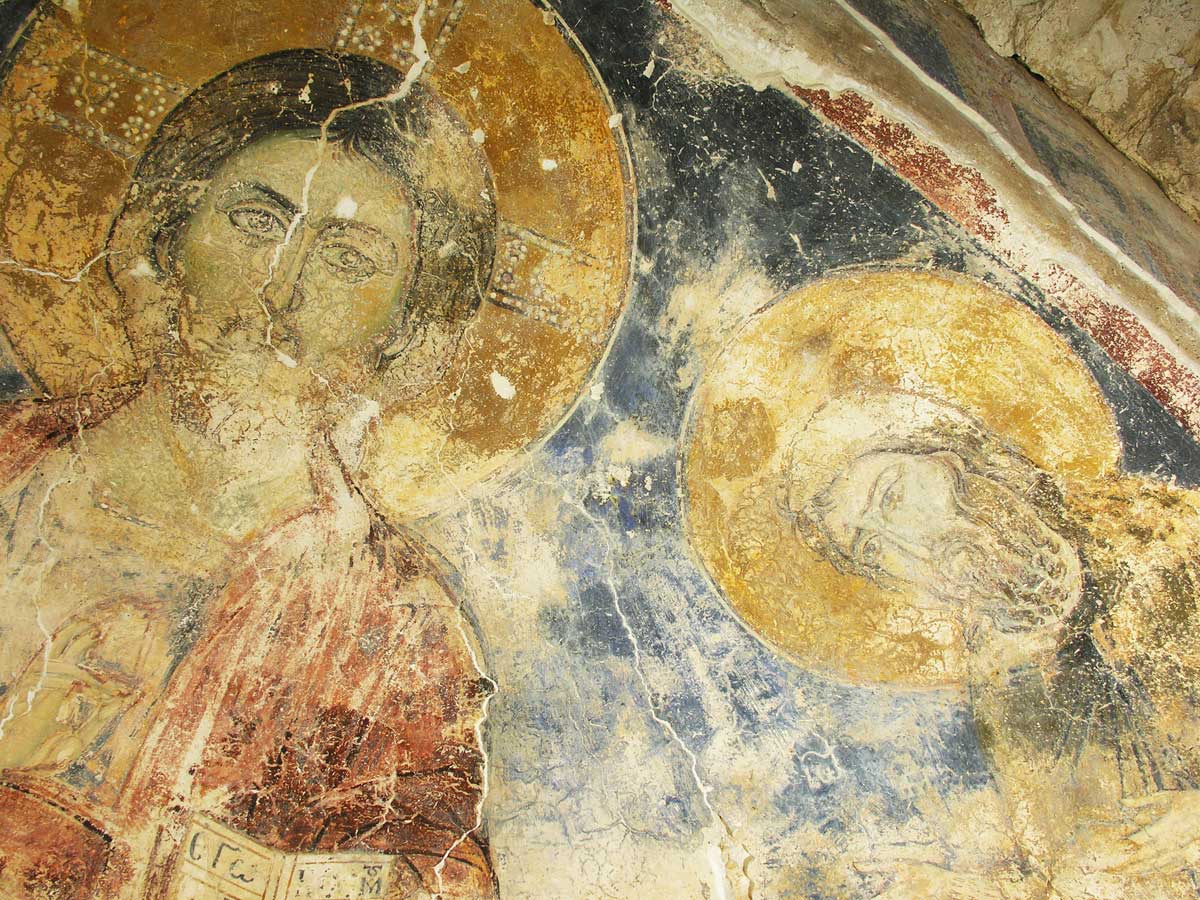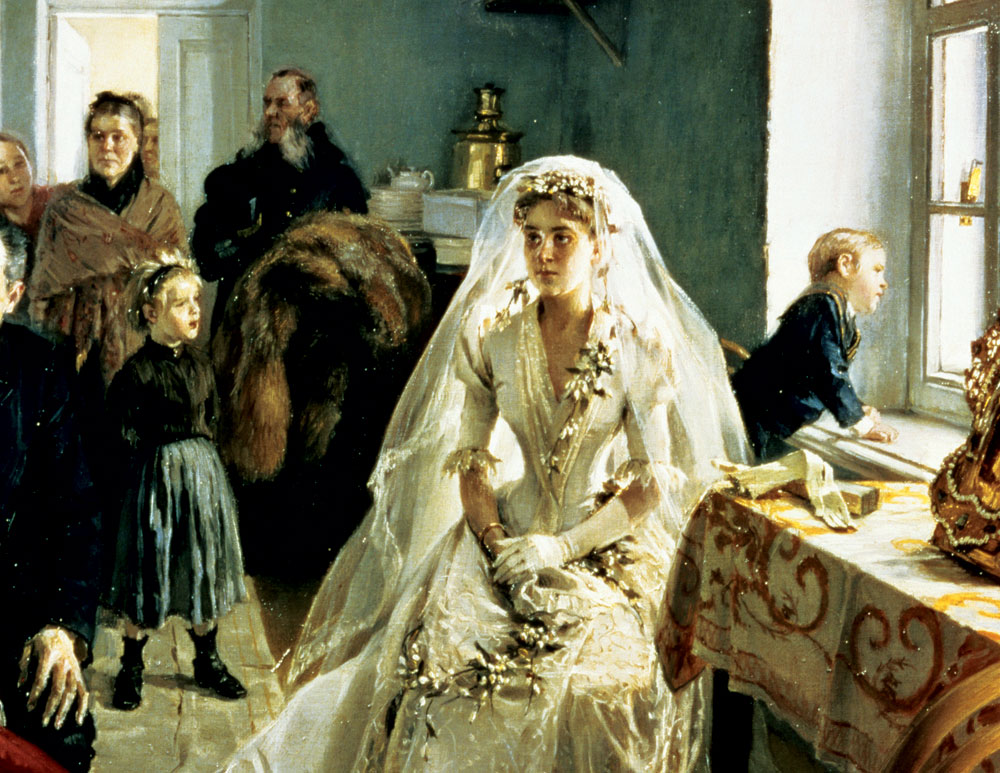Splendor in the Ordinary
David W. Fagerberg on Chesterton’s Incarnational Style
Being a credulous and docile person, I listen attentively when persons wiser than myself tell me that there is a great deal to be learned from literature. Being a virtuous and amicable person, I have resolved some day to read more literature. Being a person with no natural disposition towards literature, I am procrastinating in my literary excursions until I’m older and wiser, at which time they will no doubt do me more good. But being an academic person, I have in the meantime done the next best thing to reading literature: I have read a book about literature.
In the middle of this century, Erich Auerbach, who became professor of romance languages at Yale, wrote a survey of Western literature entitled Mimesis: The Representation of Reality in Western Literature. The reality Auerbach hoped to find represented was ordinary, mundane, routine reality.
Impossible Treatments
His survey begins with Homer, winds through Roland and Chrétien, visits Dante and Shakespeare, analyzes Molière, Goethe, and Zola, arrives at Woolf and Proust, and then informs the reader that although in modern literature any character, regardless of type or social standing, can be treated seriously, this was not always the case. In antiquity, serious treatment of the wrong subject was completely impossible.
There were rules determining the nature of each style and the subjects it could treat. Certain subjects required certain literary styles. Tragedies were written in a different style (elevated) from comedies (low), and the subjects the tragedies could treat were also different from those the comedies could treat.
Ordinary, mundane, routine reality was always treated as the subject of comedy. For the ancient authors, “There could be no serious literary treatment of everyday occupations and social classes—merchants, artisans, peasants, slaves—of everyday scenes and places—home, shop, field, store—of everyday customs and institutions—marriage, children, work, earning a living—in short, of the people and its life.”
It was an almost universal rule that the realistic depiction of daily life was incompatible with the sublime, that the mundane had a place only in comedy. A tragedy always showed a hero or nobleman suffering the twists of fate; it never showed an ordinary man or woman coping with the quotidian. A prince who finds that he had killed his father and married his mother is a subject for tragedy, but a salesman who dies in despair is not. In ancient literature, nobility, greatness, and excellence were not to be found in everyday reality or everyday people.
The modern writers Auerbach surveyed could write about a poor man seriously, but most (though not all) could only write about him from a distance, and many (though again, not all) did not write as if his life and sufferings were as noble as the intellectual’s. At this point, my thought turned to Chesterton, for I can think of few people who took the common man more seriously than he did, or believed more completely in the eternal worth of ordinary life.
Chesterton remembered in his youth disliking people with “shiny pebbly eyes and patient smiles,” whose “patience mostly consisted of waiting for others to rise to the spiritual plane where they themselves already stood,” he told us in his Autobiography. “It is a curious fact, that they never seemed to hope that they might evolve and reach the plane where their honest green-grocer already stood. They never wanted to hitch their own lumbering wagon to a soaring cabman; or see the soul of their charwoman like a star beckon to the spheres where the immortals are.”
Chesterton eschewed the highbrow who, believing the circle of life could be turned more thrillingly by esoteric pleasures, valued only an elite inner circle of friends, expected to be especially sensitive and spiritually elevated. For Chesterton, ordinary people were not comic players on the stage of life whose hopes and pains were to be laughed at, while noble accomplishments and tragic suffering were to be found exclusively in the social and intellectual elites.
Even to his good friend, the socialist George Bernard Shaw, Chesterton had to protest “that the thing which is valuable and lovable in our eyes is man—the old beer-drinking, creed-making, fighting, failing, sensual, respectable man.” (It is in this passage, from his early book Heretics, that he gave his famous description of St. Peter as “a shuffler, a snob, a coward—in a word, a man.”) Like many of his day, Shaw had hoped for a Superman, and finding that man is incapable of the philosophy of progress, Mr. Shaw asks, not for a new kind of philosophy, but for a new kind of man. It is rather as if a nurse had tried a rather bitter food for some years on a baby, and on discovering that it was not suitable, should not throw away the food and ask for a new food, but throw the baby out of the window, and ask for a new baby.
Chesterton cared for the baby. Such common goods as marriage and family and freedom and labor and sorrow and exuberant celebration are the primary things and to be counted among the noble things in life.
Serious Comic Writing
A living exception not only to antiquity’s universal rule but also to the assumptions of the elites of his day (and ours), Chesterton wrote about serious things comically, and—more scandalously—ordinary things gravely. Any modern reader who smiles as Chesterton makes a very serious point realizes how this journalist’s view of the world affected his literary style.
The practice of writing about serious things in a comic style sometimes resulted in people misunderstanding how seriously he meant the argument, driving Chesterton to exasperation. “I could never understand why a solid argument is any less solid because you make the illustrations as entertaining as you can,” he wrote in the Autobiography.
If you say that two sheep added to two sheep make four sheep, your audience will accept it patiently—like sheep. But if you say it of two monkeys, or two kangaroos, or two sea-green griffins, people will refuse to believe that two and two make four. They seem to imagine that you must have made up the arithmetic, just as you have made up the illustration of the arithmetic. And though they would actually know that what you say is sense, if they thought about it sensibly, they cannot believe that anything decorated by an incidental joke can be sensible. Perhaps it explains why so many successful men are so dull—or why so many dull men are successful.
His writing about serious things in a comic style was not just a way of entertaining his reader, however. He wrote about ordinary things in a high style because he took “ordinary” as an accolade instead of an insult. “I am ordinary in the correct sense of the term,” he wrote in a later book, The Thing, “which means the acceptance of an order; a Creator and the Creation, the common sense of gratitude for Creation, life and love as gifts permanently good, marriage and chivalry as laws rightly controlling them, and the rest of the normal traditions of our race and religion.”
Marriage is not hackneyed and boring because people have gotten married for millennia; it is not dull because it is ordinary. Quite the reverse: the thrill of domesticity is original to the individual, if not to the race. Marriage is exciting just because it is ordinary.
Thus Chesterton not only sees tragedy among the nobility, as antique literary style and modern elitist presumption would have it; he also finds tragedy when one particular young slum-dweller is affronted. The government had ordered the heads of all children in the slums to be shaved because of a lice epidemic, and Chesterton growled in What’s Wrong With the World that “It never seems to strike these people that the lesson of lice in the slums is the wrongness of slums, not the wrongness of hair.” He came to her defense.
With the red hair of one she-urchin in the gutter I will set fire to all modern civilization. Because a girl should have long hair, she should have clean hair; because she should have clean hair, she should not have an unclean home; because she should not have an unclean home, she should have a free and leisured mother; because she should have a free mother, she should not have a usurious landlord; because there should not be an usurious landlord, there should be a redistribution of property; because there should be a redistribution of property, there shall be a revolution.
This little girl, he continued,
shall not be lopped and lamed and altered; her hair shall not be cut short like a convict’s; no, all the kingdoms of the earth shall be hacked about and mutilated to suit her. She is the human and sacred image; all around her the social fabric shall sway and split and fall; the pillars of society shall be shaken, and the roofs of ages come rushing down; and not one hair of her head shall be harmed.
Few in the modern world would upset the political order for the sake of one street urchin, and no antique author would make this common girl the central character of a tragedy. Chesterton discusses her plight in grave style and with grave countenance.
Merged in Christ
An explanation for this capacity or propensity in Chesterton can be found in Auerbach, too. Although antiquity strictly separated the elevated style from the low style, “in the world of Christianity . . . the two are merged, especially in Christ’s Incarnation and Passion, which realize and combine sublimitas and humilitas in overwhelming measure.”
Once the Son of God has cascaded from heaven and splashed down in a feeding trough, and the Logos of eternal Wisdom has become a peasant’s son, and rude laborers have seen the Kingdom of God with their own eyes, there is no further basis for separating the sublime from the mundane, the high from the low, the elite from the ordinary, for they are indissolubly connected. Therefore Chesterton saw the eternal conjoined to this small girl’s dignity, and saluted her with a reverence most of us have forgotten. •
David W. Fagerberg is Associate Professor in the Department of Theology of the University of Notre Dame and the author of The Size of Chesterton?s Catholicism (Notre Dame).
subscription options
Order
Print/Online Subscription

Get six issues (one year) of Touchstone PLUS full online access including pdf downloads for only $39.95. That's only $3.34 per month!
Order
Online Only
Subscription

Get a one-year full-access subscription to the Touchstone online archives for only $19.95. That's only $1.66 per month!
bulk subscriptions
Order Touchstone subscriptions in bulk and save $10 per sub! Each subscription includes 6 issues of Touchstone plus full online access to touchstonemag.com—including archives, videos, and pdf downloads of recent issues for only $29.95 each! Great for churches or study groups.
Transactions will be processed on a secure server.
more from the online archives
calling all readers
Please Donate
"There are magazines worth reading but few worth saving . . . Touchstone is just such a magazine."
—Alice von Hildebrand
"Here we do not concede one square millimeter of territory to falsehood, folly, contemporary sentimentality, or fashion. We speak the truth, and let God be our judge. . . . Touchstone is the one committedly Christian conservative journal."
—Anthony Esolen, Touchstone senior editor









